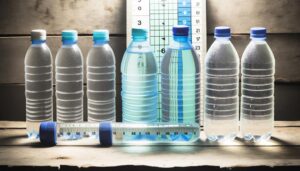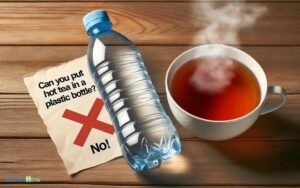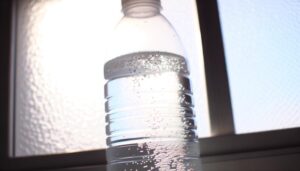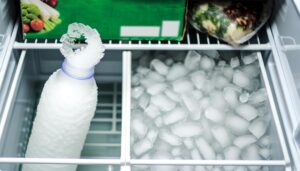Can Water Go Bad in a Metal Water Bottle? Explained!
Yes, water can go bad in a metal water bottle if you don’t clean and store it properly. Bacteria and mold can grow in warm, unclean environments, leading to health risks.
Stainless steel is generally safe and durable, but low-quality metals might leach harmful substances.
Frequent washing with hot water and soap, air drying, and storing in a cool, dry place are essential practices.
Also, avoid leaving water in the bottle for prolonged periods. If you notice unusual odors, off flavors, or slime, it’s time for a thorough cleaning. Explore further to make sure your water stays fresh and safe.
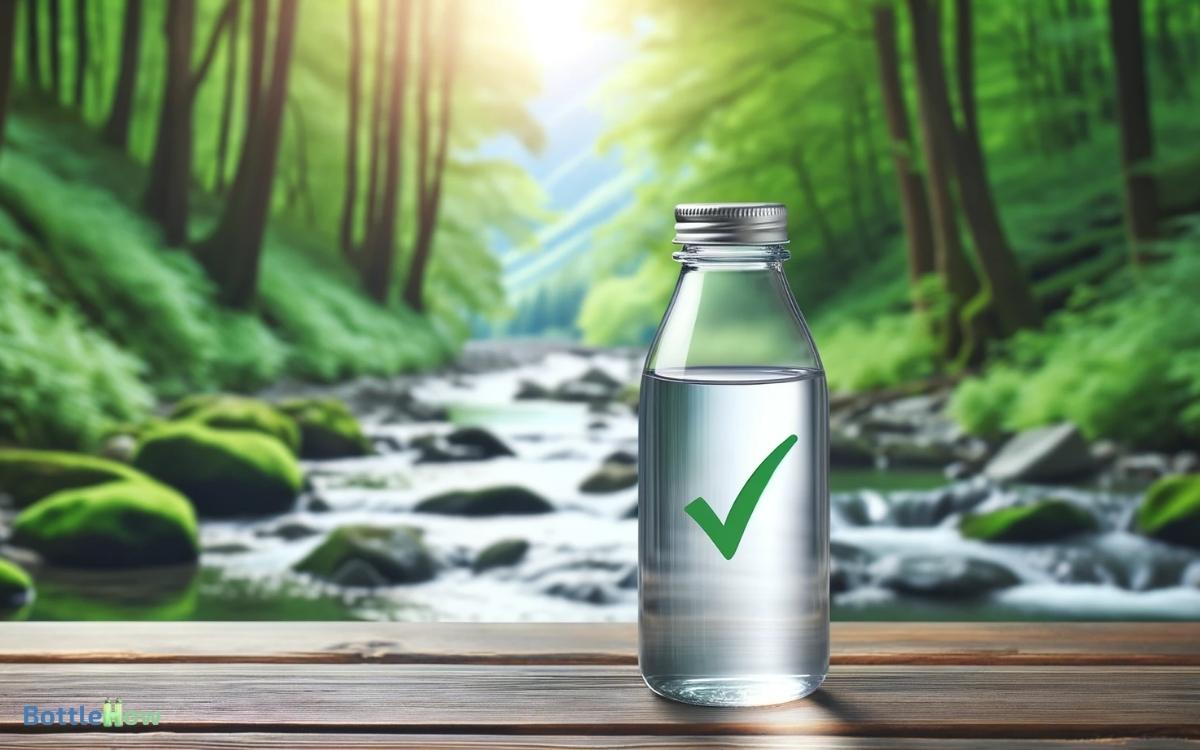
Key Takeaways
Understanding Water Contamination
Water contamination occurs when harmful substances infiltrate your water supply, compromising its quality and safety. These contaminants can include bacteria, viruses, chemicals, and heavy metals.
When you store water in a metal bottle, understanding potential sources of contamination is essential.
Studies show that microbial growth can occur if the bottle isn’t cleaned regularly. Additionally, external pollutants from the environment can enter if the bottle isn’t sealed properly.
The World Health Organization states that even trace amounts of harmful substances can pose health risks.
As a result, regularly checking your water source and ensuring proper hygiene for your bottle are vital steps.
Metal Bottle Materials
When considering metal water bottles, you’ll encounter various materials like stainless steel, aluminum, and copper. Each type of metal has distinct properties that affect safety and water quality.
Understanding these materials and their potential safety concerns is essential for ensuring your water remains fresh and uncontaminated.
Types of Metals
Different types of metals used in water bottles, such as stainless steel, aluminum, and copper, offer unique benefits and potential drawbacks. Stainless steel is durable and resistant to corrosion, making it a popular choice.
Aluminum is lightweight and cost-effective but may require a lining to prevent oxidation. Copper has natural antimicrobial properties but can tarnish over time.
| Metal Type | Benefits |
|---|---|
| Stainless Steel | Durable, corrosion-resistant |
| Aluminum | Lightweight, cost-effective |
| Copper | Antimicrobial properties |
| Metal Type | Drawbacks |
| Stainless Steel | Heavier than aluminum |
| Aluminum | May need lining, less durable |
| Copper | Can tarnish, potentially reactive |
Understanding these characteristics helps you choose the right bottle for your needs.
Material Safety Concerns
Frequently, concerns about material safety in metal water bottles focus on the potential for metal leaching and the presence of harmful chemicals.
You might worry about metals like aluminum, which can leach into water if the bottle’s lining deteriorates. Stainless steel, however, is generally important due to its corrosion resistance.
Look for bottles labeled as BPA-free, as some metal bottles have plastic linings that can contain this harmful chemical. It’s essential to check for food-grade materials and certifications, ensuring compliance with safety standards.
Studies show that high-quality stainless steel bottles don’t greatly leach metals, making them a safer option.
Always inspect your bottle for any damage or unusual taste in the water, as these can be indicators of potential issues.
Bacteria and Mold Growth
You should be aware that bacteria and mold can thrive in metal water bottles, especially in warm environments.
Poor cleaning habits exacerbate this risk, as residues and moisture create an ideal breeding ground.
Additionally, using contaminated water sources can introduce harmful microorganisms into your bottle, compromising water quality.
Warm Environments Risk Growth
In warm environments, bacteria and mold can quickly proliferate inside metal water bottles, posing potential health risks. Elevated temperatures create an ideal breeding ground for microorganisms.
Studies show that bacteria such as E. coli and Staphylococcus can multiply exponentially in warm, moist conditions.
Metal water bottles, especially those with narrow openings, can trap heat and moisture, further promoting microbial growth.
Mold spores thrive similarly, potentially leading to contamination of your drinking water. Regular exposure to these pathogens can result in gastrointestinal issues and respiratory problems.
Hence, it’s important to store your bottle in cool places and avoid leaving it in hot environments like cars or direct sunlight. Understanding this risk helps you maintain better health and hygiene.
Poor Cleaning Habits
Neglecting to clean your metal water bottle regularly creates a fertile environment for bacteria and mold to thrive.
Studies indicate that even trace amounts of organic matter, such as saliva or residual beverages, provide nutrients for microbial growth.
Bacteria like E. coli and molds can flourish in these conditions, posing potential health risks. A 2017 study found that reusable bottles harbor a much larger amount of bacteria than household items like pet bowls. Regular cleaning with soap and hot water is crucial to mitigate this risk.
Ensuring thorough drying also prevents mold formation, as moisture is a key component for its growth.
By maintaining good hygiene practices, you safeguard your health and make sure your water stays safe to drink.
Contaminated Water Sources
While good hygiene practices are essential, the quality of the water you fill your metal bottle with also plays a vital role in preventing bacterial and mold contamination.
Using water from a contaminated source can introduce harmful pathogens like E. coli and fungi into your bottle. These harmful microorganisms can multiply quickly, especially in warm environments, increasing the risk of illness. If left unchecked, a 7 days to die water bottle could become a breeding ground for bacteria, making each sip potentially dangerous. Regularly cleaning and properly storing your bottle can help prevent contamination and protect your health.
Studies have shown that even trace amounts of these contaminants can thrive in an enclosed, moist environment, leading to rapid bacterial growth. Ensuring your water is filtered and treated properly reduces these risks considerably.
Additionally, regularly inspecting water sources and using purification methods, such as boiling or UV treatment, can further safeguard against contamination.
By maintaining both clean bottles and pure water, you effectively minimize health risks associated with bacteria and mold growth.
Chemical Leaching Risks
When using a metal water bottle, you should be aware of potential chemical leaching from the bottle’s material into the water.
Stainless steel and aluminum bottles can sometimes release small amounts of metals, especially if the bottle is scratched or damaged.
Studies indicate that low-quality bottles may leach nickel, chromium, and other metals into the water.
To minimize risks, choose high-quality bottles with a food-grade lining, like BPA-free coatings. Regularly inspect your bottle for wear and tear, as damaged coatings can exacerbate leaching.
Scientific evidence suggests that while the levels are often below harmful thresholds, long-term exposure could still pose health risks.
Understanding the materials and maintenance of your bottle is essential for safe water consumption.
Temperature Effects on Water
The temperature of the water in your metal bottle can greatly impact both its taste and safety. If water sits in a warm environment, it can promote bacterial growth, even in a metal bottle. Studies show that bacteria multiply rapidly between 40°F and 140°F.
Conversely, cold water tends to inhibit bacterial growth, keeping your drink safer. Additionally, high temperatures can alter the taste by increasing the rate of chemical reactions, potentially causing metallic flavors.
Insulated bottles are particularly effective at maintaining a stable temperature, thus reducing these risks.
As such, it’s important to store your bottle in a cool place and avoid prolonged exposure to heat. This helps to ensure that your water remains fresh and safe to drink.
Cleaning and Maintenance
Ensuring your metal water bottle remains clean is essential to prevent water from going bad.
You should clean it regularly using effective methods like hot water and mild soap to avoid mold growth. Studies suggest that proper maintenance greatly reduces the risk of bacterial contamination.
Proper Cleaning Frequency
Regularly cleaning your metal water bottle is crucial to prevent bacterial growth and maintain water quality. Studies show that water bottles can harbor harmful bacteria if not cleaned frequently.
To guarantee your water bottle remains safe and hygienic, follow this cleaning frequency:
- Daily: Rinse your bottle with hot water and mild soap to remove any daily buildup.
- Weekly: Perform a more thorough cleaning, using a bottle brush to scrub all surfaces, including the cap and threads.
- Monthly: Soak your bottle in a mixture of water and vinegar or baking soda to eliminate any lingering odors and deep-seated grime.
- As Needed: Clean immediately after storing non-water beverages to prevent mold and bacterial growth.
These steps will help maintain excellent hygiene and water quality.
Effective Cleaning Methods
To maintain the hygiene and water quality of your metal water bottle, utilize these effective cleaning methods that are both practical and evidence-based.
Start by rinsing the bottle with warm, soapy water after each use. For a more thorough cleaning, use a bottle brush to reach all interior surfaces.
Once a week, disinfect the bottle by filling it with a mixture of one part white vinegar to three parts water, letting it sit overnight, and then rinsing thoroughly. Alternatively, you can use a solution of baking soda and water for an effective clean.
Make sure the bottle is completely dry before storing it to prevent bacterial growth. Regular cleaning, combined with proper drying, maintains excellent hygiene and water quality.
Avoiding Mold Growth
Preventing mold growth in your metal water bottle hinges on meticulous cleaning and thorough drying practices. Mold thrives in damp, dark environments, making your bottle a potential hotspot.
To combat this, follow these steps:
- Daily Rinse: After each use, rinse your bottle with hot water to eliminate residual moisture and contaminants.
- Deep Clean Weekly: Use a bottle brush and mild soap weekly to scrub every nook and cranny.
- Dry Completely: Always allow your bottle to air dry fully, preferably upside down, to guarantee no water remains.
- Inspect Regularly: Check for mold signs, especially in hard-to-see areas like the lid and straw.
These practices guarantee your bottle stays mold-free and safe for use, maintaining your health and hydration.
Proper Storage Practices
Storing your metal water bottle in a cool, dry place is essential to prevent bacterial growth and maintain water quality.
Bacteria thrive in warm, moist environments, so keeping your bottle away from direct sunlight and humid areas greatly reduces contamination risks.
For best results, store it with the cap off to allow airflow, which helps inhibit mold and bacterial proliferation.
Regularly cleaning and drying the bottle before storage is important. Studies show that proper storage can extend the usability of the water inside, ensuring it’s safe for consumption.
Remember, the goal is to create an environment where bacteria and mold can’t flourish, thereby preserving the integrity of your drinking water.
Follow these practices to ensure your water remains fresh and safe.
Comparing Metal to Plastic
When comparing metal water bottles to their plastic counterparts, it’s important to take into account factors like durability, safety, and environmental impact.
Here’s a breakdown:
- Durability: Metal bottles, especially stainless steel, are more robust and long-lasting than plastic ones, which can crack or warp over time.
- Safety: Metal bottles are less likely to leach harmful chemicals like BPA, often found in plastic bottles, especially when exposed to heat.
- Environmental Impact: Metal bottles are generally more eco-friendly. They’re recyclable and have a longer lifespan, reducing the need for frequent replacements.
- Taste and Odor: Metal bottles don’t retain flavors or odors as easily as plastic, making your water taste fresh.
Considering these factors can help you make a more informed choice.
Signs of Bad Water
A few key indicators can help you determine if the water in your metal bottle has gone bad.
- First, check for any unusual odors; a musty or metallic smell suggests contamination.
- Second, look at the water’s clarity. Cloudiness or visible particles indicate potential bacterial growth or impurities.
- Third, taste a small amount. If it tastes off, bitter, or metallic, discard it immediately.
- Lastly, feel the inside of the bottle. A slimy texture often points to biofilm formation, a sign of bacterial presence.
Tips for Safe Hydration
To guarantee the water in your metal bottle remains safe to drink, there are several evidence-based practices you should follow. Maintaining a clean bottle and using fresh, potable water can prevent contamination.
Here’s a precise list to secure safe hydration:
- Clean Regularly: Wash your bottle daily with warm water and soap to eliminate bacteria and residues.
- Use Fresh Water: Refill your bottle with water that meets drinking standards, avoiding stagnant sources.
- Store Properly: Keep your bottle in a cool, dry place to prevent bacterial growth.
- Inspect Frequently: Regularly check for any unusual odors or discoloration that might indicate contamination.
Conclusion
You’ve got to take into account both material and maintenance when it comes to water in a metal bottle.
If you don’t clean it regularly, bacteria and mold can thrive. While metals like stainless steel don’t leach chemicals, poor storage can still make water unsafe.
Unlike some plastics, metal doesn’t retain flavors, but it isn’t foolproof. Stay vigilant for signs of contamination, and you’ll enjoy safe hydration. Proper care really makes the difference.

